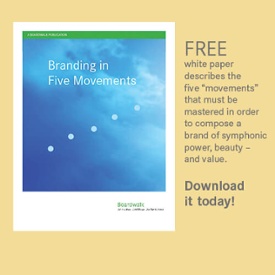![]() When children are first enrolled in kindergarten, they are tested so teachers can find out what each child does and doesn’t already know. Can they tell a circle from a square? Do they know their colors? The vast majority of them do already know these visual stimuli. Not so many, however, already know their numbers 0-9 or the entire alphabet A-Z. Visual literacy comes before reading or math skills. When you think about it, it’s pretty impressive, the degree of visual literacy we’ve mastered by age five. Not only do we have shapes and colors down cold but, even as kids, we can read facial expressions and body language with remarkable accuracy. By the time kids are twelve, they can read the room in an instant. They can tell what experiences seem attractive and what should be avoided, who seems nice and who’s probably a jerk. What’s amazing is that it all happens in the background, without us even having to really think about it. Marketers rely on our visual literacy every day. They tell us about their brands using visual clues, counting on our sophisticated “inner language” to add in meaning and read the story. It’s called semiotics: the study of signs and symbols and their use or interpretation. Marketers may straight-up tell us their advertising message. But, mostly, they use semiotics to get the brand story across. Here’s why.
When children are first enrolled in kindergarten, they are tested so teachers can find out what each child does and doesn’t already know. Can they tell a circle from a square? Do they know their colors? The vast majority of them do already know these visual stimuli. Not so many, however, already know their numbers 0-9 or the entire alphabet A-Z. Visual literacy comes before reading or math skills. When you think about it, it’s pretty impressive, the degree of visual literacy we’ve mastered by age five. Not only do we have shapes and colors down cold but, even as kids, we can read facial expressions and body language with remarkable accuracy. By the time kids are twelve, they can read the room in an instant. They can tell what experiences seem attractive and what should be avoided, who seems nice and who’s probably a jerk. What’s amazing is that it all happens in the background, without us even having to really think about it. Marketers rely on our visual literacy every day. They tell us about their brands using visual clues, counting on our sophisticated “inner language” to add in meaning and read the story. It’s called semiotics: the study of signs and symbols and their use or interpretation. Marketers may straight-up tell us their advertising message. But, mostly, they use semiotics to get the brand story across. Here’s why.
Visual communication is better at generating long-term buy in. When a consumer hears or reads an advertising claim being made, it doesn’t stick. That’s why advertising messaging needs to be repeated over and over. Since consumers don’t actually know the claimant, consumers have no reason to trust the claims being made. So the messaging doesn’t stick. But semiotic signals, for some reason, do. The fact that, as infants, we seem pre-programed to be able to think visually offers a clue. Perhaps our visual literacy operates at a much deeper level – somewhere way down in our limbic system – than our speech and math skills.
When we see something “with our own eyes” it’s much easier to accept it as true. Notwithstanding the fact that we’re fully aware that what we’re seeing is being staged for our benefit. The actor Larry Hagman was sometimes attacked in public by total strangers. Because the character he played on a popular TV show was considered so evil some viewers forgot that it’s all just make believe. Likewise, for decades, Marlboro cigarettes associated itself with an iconic figure known as the Marlboro man. Everybody knew he was just an advertising ploy, that he was only a fictional character. Still, Marlboro sold boatloads of cigarettes because some male smokers wanted to think of themselves as free, capable and adventurous just like the Marlboro man. Their limbic systems formed an emotional connection.
Ask Boardwalk how to integrate semiotics
into your visual communication system.
It gets even more complicated. Not only are we humans expert at reading symbols. We’re also really good at understanding the contexts in which the symbols appear. As an example, take the famous “thumbs up” sign. Everybody knows what that means, right? All good. A-OK. Right? Well, that depends on context. The photos below show what the sign means in three different contexts. 


But you knew that already, right? You’ve known what the thumbs up meant since you were a toddler and, very soon after, you understood its variations as modified by its context. We all know how to read the non-verbal signs around us. In a very real way, we’re all semioticians. (I’m told, by the way, that in some parts of the world, this sign also has a very rude meaning. So please be careful when traveling.)
But what does this have to do with brand storytelling? Simple. Every marketing campaign has its advertising message and its branding message. A good illustration of that is the famous Miller Lite campaign from McCann-Erickson in the ‘70s and ‘80s. The ads depicted two sides of people arguing about the beer. One side would shout, “Tastes great!” The other side would counter, “Less filling!” That’s the advertising message, front and center. That’s the sell. Those are the two features that Miller Lite wanted to stick in your mind. And they were about as direct about hammering those two points home as they could be.
In contrast, the branding message is implied through semiotics. Every ad included sports figures, popular comedians and beautiful women. The “arguments” usually took place in a sports bar, a sports venue or a home den with sports memorabilia all around. The bickering was all played for broad comedy, all in good fun. The branding message is: Drink Miller Lite and you can feel connected to us really accomplished, athletic and fun guys who happen to attract beautiful women. It’s an unspoken promise that you’ll be one of the cool kids. You’ll be in the tribe. The semiotics of the ads is what sparks an emotional connection between the viewer and the brand. It's what makes the beer attractive to the beer drinker.
Advertising messages change all the time. Ads do whatever they have to do to drive up sales. Branding messages are constant or, at least, they should be. Long term, branding drives up profits. That’s why it’s so important to understand your brand completely and develop a strategy to drive its growth.
Next time you’re walking down a busy street, pay attention to all the store fronts. Look at the logos and how they’re constructed. Look at the fonts and color schemes they use. Look at the architecture and what’s displayed in the windows. What store piques your curiosity? What store repels you? What are the visual cues that spark that attraction or repulsion? Why are you responding to them the way you are?
Business communication occurs on many levels. Personal contact – online, on the phone, over lunch, or on the golf course. Advertising – through any sorts of media, online or off. Branding – through understanding semiotics and designing each touch point to match or exceed the market’s expectations resulting in consistent and superb customer experience.
Best Branding Reads – Week of October 14, 2019
Ruling the roost: 5 Questions with Andrea Zahumensky, CMO at KFC US
Great insight into how even the most boring, commoditized product can be turned into a beloved brand.
Experience And Influence: The New Status Symbols
Less is more. Less is more. Less is more. Less is more. Less is more. Less is more. Have I said too much?
The Hard Truth of Living Your Brand Values
It’s easy to talk the talk. Much harder to walk the walk.
The Role of Brand In a Crisis
In a crisis, strong brands become the flag around which people can rally and respond.
New Logo and Identity for 2019 World Fencing Championships
As an ex-fencer myself, I can’t tell you how sick I am of lunging-fencer logos. This new logo takes fencing logos up to a higher level. I agree with the author it should be used beyond 2019.
New Logo and Identity for Museo Moderno
Agree with author: the colors are weird but there’s greatness in the structure of the identity.
Innovating With The Jobs To Be Done Concept
I really like this approach.



